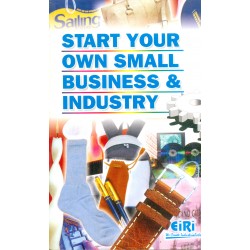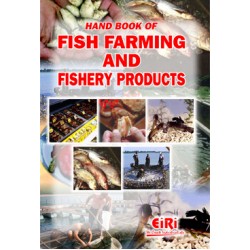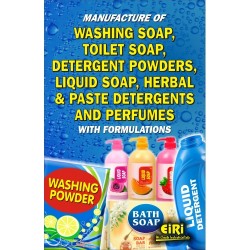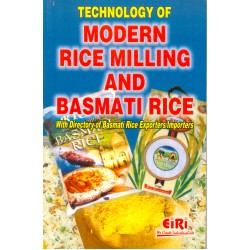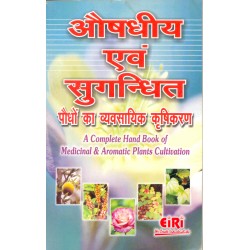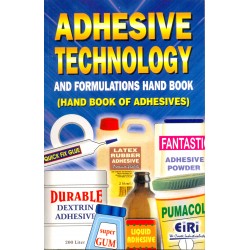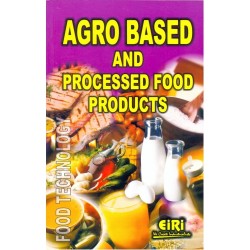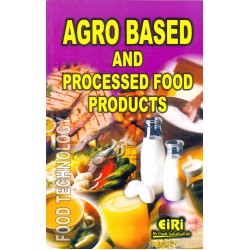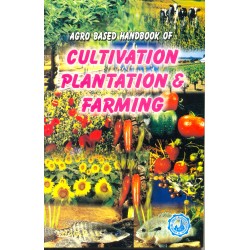aloevera cultivation, processings, formulations and manufacturing technology (hand book)

- More than 40 years of experience
- Managed by expert industrial consultants
- ISO 9001-2015 Certified
- Registered under MSME, UAM No: DL01E0012000
- 24/5 Research Support
Get your quesries resolved from an industry expert. Ask your queries before report or book purchase. - Custom Research Service
Speak to the our consultant to design an exclusive study to serve your research needs. - Quality Assurance
All reports are prepared by highly qualified consultants & verified by a panel of experts. - Information Security
Your personal & confidential information is safe & secure.
Numerous aloe species around the world are used for conditions ranging from dermatitis to cancer. Aloe gel’s greatest use is as a skin salve and vulnerary for minor burns, abrasions, canker sores and other epithelial injuries. There is growing experimental evidence for its use as an antiviral, an ulcer remedy and an adjuvant cancer treatment due to its immune modulating effects. Aloe latex is a potent laxative that can cause severe cramping and diarrhea; it should not be used during pregnancy, lactation or by children less than 12 years old. Allergic reactions to aloe have been reported. Long-term use of anthraquinone laxatives may result in laxative dependence, pseudomelanosis coli, dehydration, potassium depletion, weakness, and arrhythmias. Aloe should not be used as a laxative by persons with undiagnosed abdominal pain, appendicitis, or intestinal obstruction.
Ancient Egyptian papyrus and Mesopotamian clay tablets describe aloe as useful in curing infections, treating skin problems and as a laxative. Cleopatra was said to include aloe cream in her beauty regimen. Aloe was used by Hippocrates and Arab physicians, and was carried to the Western Hemisphere by Spanish explorers. Legend has it that Alexander the Great captured the island of Socotra in the Indian Ocean to secure its aloe supplies to treat his wounded soldiers.
Aloe is also popular in both traditional Chinese and Ayurvedic medicine. The Chinese describe aloe’s skin and the inner lining of its leaves as a cold, bitter remedy which is downward draining and used to clear constipation due to accumulation of heat (fire); the gel is considered cool and moist. In Ayurvedic medicine, the traditional medicine of India, aloe is used internally as a laxative, anti-helminthic, hemorrhoid remedy, and uterine stimulant (menstrual regulator); it is used topically, often in combination with licorice root, to treat eczema or psoriasis. In Arabian medicine, the fresh gel is rubbed on the forehead as a headache remedy or rubbed on the body to cool it in case of fever, as well as being used for wound healing, conjunctivitis, and as a disinfectant and laxative.
Today aloe vera gel is an active ingredient in hundreds of skin lotions, sun blocks and cosmetics. The gel’s use in cosmetics has been boosted by claims that it has similar anti -aging effects to vitamin A derivatives. Aloe first gained popularity in the United States in the 1930s with reports of its success in treating X-ray burns. Recently, aloe extracts have been used to treat canker sores, stomach ulcers and even AIDS. Some natural health enthusiasts promote aloe gel as a cleansing juice. Some naturopaths promote aloe juice as a way to prevent and treat renal stones. Many mothers keep a plant handy in the kitchen where it readily thrives in bright sunlight with little care. When faced with a minor burn, a fresh leaf can be cut and the gel of the inner leaf applied directly to the burn immediately after the injury. The inner leaf lining of the plant is used as a potent natural laxative. In a 1990 survey of members of a health maintenance organization, aloe vera was used by 64%; of these, 91% believed it had been helpful. Aloe is also an ingredient in Compound Benzoin tincture.
This volume contains 65 chapters on Aloe vera, i.e., Introduction, Cultivation, Aloe vera Leaf Processor, Aloe vera Gel Extracting Apparatus, Aloe vera Plant Gel Separator, Aloeferon, Manufacturing and its Application, Stabilized Aloe vera Gel, Hypoallergenic Stabilized Aloe vera Gel, Aloe vera Gel Toothpaste, Protective Hand Lotion of Aloe vera Gel and Vitamin E Gel, Cosmetic Facial Preparation Containing Aloe vera, Cosmic Lotion, Cosmetic Composition, Conditioner that provides Skin like an Angel, Hair Cleanser, Hair Product, Dyeing Composition of Hair, Therapeutic Shampoo Composition, Whitening Compound, Organic Toothpaste, Shaving Composition, Detergent Compositions, Disinfectant Cleaning Composition, Slimming Soap, Cleasning Composition with Orange Oil, Aloe vera Ointment, Treatment of Herps, Therapeutic Comopsition for Treatment of Mucositis and Mucosal Disroder, Cooling Towel, Topical Dermal Anaesthetic, Herbal Composition for Treating Muscle Aches and Joint Pain, Immunomodulatory Polysaccharides from Aloe, Softening Composition, Antimicrobial Agents Isolated from Aloe vera, Antioxidant Compositions for the Eye, Burn Treatment, Detergent Composition Containing Aloe vera, Extracts of Aloe for Oral Administration, Herbal Formulation, Nasal Spray, Non-irritating Antiperspirant, Non-toxic Mucosal Disinfectant, Aloe vera Opthalmic Solution, Aloe Pectins and its Pharmaceutical Composition, Scar Reducing and Massage Emollients, Skin Therapeutic Mixture, Topical Analgesic Formulation, Topical Composition for Relief of Pain and Minor Skin Irritations, Transdermal Formulation, Herbal Formulation Useful for Treatment of Skin Disorders, Neutraceutical Treatments for Diabetic and Non-diabetic Wound Healing, Therapeutic Composition for Treatment of Arthritis and other Afflictions, Therapeutic Cream , Wound Healing, Clear Juice from the Leaves of the Aloe vera Plant, Drink Containing Mucilaginous Polysaccharides, Healthy Baby Beverage, Nutritional Composition, Aloe vera Glove, Aloe vera Processed Leather and Leather Gloves, Garments, Shoes and Sandals, Gloves Containing Dry Aleo Powdered, Treating Textiles and Articles of Clothing, Additives for Sanitary Napkins, Insect Repellent, Uses of Denture Adhesive Containing Aloe Extract, Adhesive Agent and its Use, Scale Inhibitor from Aleo, Coating Containing Denatured Aloe vera.
1. Introduction
2. Cultivation
- Climate
- Soil
- Land preparation
- Planting Time
- Varieties/Genotype
- Propagation
- Planting Material
- Spacing and Planting
- Manuring
- Irrigation
- Interculture
- Intercropping
- Insect Pests and Diseases
- Harvesting
- Yield
- Post-Harvest Management
- Marketing
- Processing
- Chemical Composition
- Unit Cost
3. Aloe vera Leaf Processor
4. Aloe vera Gel Extracting Apparatus
5. Aloe vera Plant Gel Separator
- DESCRIPTIONS
6. Aloeferon, Manufacturing and its Application
- Objects of the Method
- Descriptions
7. Stabilized Aloe Vera Gel
- Descriptions
8. Hypoallergenic Stabilized
- Descriptions
- Example
9. Aloe vera Gel Toothpaste
10. Protective Hand Lotion of Aloe vera Gel and Vitamin E Gel
11. Cosmetic Facial Preparation Containing Aloe vera
12. Cosmic Lotion
13. Cosmetic Composition
14. Conditioner that provides Skin like an Angel
15. Hair Cleanser
16. Hair Products
17. Dyeing Composition of Hair
18. Therapeutic Shampoo Composition
19. Whitening Compound
- Methods
- The Drawings
- Descriptions
20. Organic Toothpaste
21. Shaving Composition
22. Detergent Compositions
- Detergent Powder from Aloe vera
- Descriptions
- Examples
23. Disinfectant Cleaning Composition
24. Slimming Soap
25. Cleansing Composition with Orange Oil
26. Aloe vera Ointment
27. Therapeutic Composition for Treatment of Mucositis and Mucosal Disorder
- Descriptions
- Treatment options and published studies
- Formulation 1: Gelatin Capsules
- Formulation 2: Tablets
- Formulation 3: Sugar-Free Chewable Wafer Tablets
- Formulation 4: Suspensions
- Formulation 5: Nasal Solution
- Formulation 6: Mouth Wash
- Formulation 7: Augmented Therapeutic Composition Tablets
- Formulation 8: Augmented Therapeutic Composition Tablets with Cooling Effect
- Assay
28. Herbal Composition for Treating Muscle
- Aches and Joint Pain
- An example of a poultice formulation
- An example of a liquid herbal soak formulation
29. Immunomodulatory Polysaccharides from Aloe
- Example 1: Isolation and Purification of Immuno-10
- Limited Enzyme Digestion
- Enzyme Deactivation
- Decolorization and Filtration
30. Softening Composition
31. Antimicrobial Agents Isolated from Aloe vera
- Aloe Plant Antimicrobial Agents
- Source of the Aloe Bacteriocidal Activity
- Aloe Bactericidal Activity is not from Previously
- Identified Components
- Isolation of Novel Aloe Constituents as
- Antimicrobial Products
- Chromatographic Separation
- Aloe Plant Defense Proteins Capable of
- Antimicrobial Activity
- Materials and Methods
- Plants
- Microbial Isolation
- Morphological and Biochemical Characterization
- Isolation of DNA
- DNA Fingerprinting
- Morphological and Biochemical Characterization
- DNA Fingerprinting Analysis
- Population Dynamics Among Indigenous
- Microflora Isolated from Aloe vera
- Microbial Isolation
- Population Enumeration
- Spot Plates
- Tissue Printing
- Antibody Preparation
- Immunoblotting
32. Antioxidant Compositions for the Eye
33. Burn Treatment
34. Decongestant Composition Containing Aloe vera
35. Extracts of Aloe for Oral Administration
- Aloe
- Plant Preparations, Purification and Extracts
- Ginkgo biloba
- Camellia sinensis
- Oleacea europensis
- Trifolium pratense
- Litchi sinensis
- Vitis vinifera
- Brassica oleracea
- Punica granatum
- Petroselinium crispum
- Passiflora incarnata
- Medicago sativa
- Valeriana officinalis
- Castanea sativa
- Harpagophytum procumbens
- Hoodia gordonii
- Melissa officinalis
- Panax ginseng C.A.
- Cyclopia sp L.
- Aspalathus linearis L
- Paullinia cupana
- Opuntia ficus-indica
- Caralluma fimbriata
- Physiologically Active Agents
- Chitosans
- Physiologically Active Fatty Acids, their Salts and their Esters
- Sterols and Sterol Esters
- Industrial Application
- Examples
- Influence of Extracts on Feeding Behavior and
- Responses of an Insect, Spodoptera littoralis,
- to Glucose
- Responses to Sugars
- Comparison Examples C1-C8
- Responses to Extracts in Combination with Either Sucrose or Glucose
- Comparison Examples C9-C12
- Response of Cannulated Insects to Glucose
- Comparison Examples C13-C16
- Electrophysiology: Neural Response to Glucose
- Conclusion
36. Herbal Formulation
- Method of Extraction
- Preliminary Clinical Data
- Case 1
- Case 2
37. Nasal Spray
38. Non-irritating Antiperspirant
39. Non-Toxic Mucosal Disinfectant
40. Aloe vera Opthalmic Solution
- Preparation of the Aloe Vera gel eye drops
41. Aloe Pectins and its Pharmaceutical Composition
- Descriptions
- Materials and Methods
- Light and Electron Microscopy of Leaf Sections
- Light Microscopy of Cell Wall Fibers
- Extraction of Aloe Pectins
- Pectin Purification by Ion Exchange Chromatography
- Uronic Acid Assay
- Sugar Composition and Linkage Analysis
- Acidic Polysaccharide Gel Electrophoresis
- Enzyme Digestion of Aloe Pectin
- Acetylation, Methylation, and Total Phenol
- Acetylation and Methylation
- Determination of Total Phenol
- Methylation, Acetylation, and Total Phenol
- Molecular Weight Determination By Size Exclusion
- Chromatography (SEC)
- Viscosity
- Calcium Gel Formation
- Monovalent Cation-Based Gel Formation
- Use of Aloe Pectin as An Encapsulating Agent for Controlled Release
- Use of Monovalent Cation-Based Aloe Pectin
- Gel as A New Matrix for Antigen and Antibody
- Precipitation Reaction
- Extraction by Supercritical Fluid
- Extraction of Aloe Pectins with Enzymes
- Extraction of Aloe Pectins with Microbes
- Use of Monovalent Cation-Based Gel as a Storage Matrix
- for Pharmacological Agent
- Physical and Chemical Characterization of Aloe Pectins
- Features Overview
42. Scar Reducing and Massage Emollients
43. Skin Therapeutic Mixture
44. Topical Analgesic Formulation
45. Topical Composition for Relief of Pain and
- Minor Skin Irritations
46. Transdermal Formulation
47. Herbal Formulation Useful for Treatment of Skin Disorders
- Formulations for alleviating muscular pain
- Advantages
48. Neutraceutical Treatments for Diabetic and Non-Diabetic Wound Healing
49. Therapeutic Composition for Treatment of Arthritis and other Afflictions
50. Therapeutic Cream
51. Wound Healing
52. Clear Juice from the Leaves of the Aloe vera Plant
53. Drink Containing Mucilaginous Polysaccharides
54. Healthy Baby Beverage
- Summary, ramifications, and scope
- Additional ramifications
55. Nutritional Composition
56. Aloe vera Glove
57. Aloe vera Processed Leather and Leather Gloves, Garments, Shoes and Sandals
58. Gloves Containing Dry Aloe Powdered
59. Treating Textiles and Articles of Clothing
60. Additives for Sanitary Napkins
61. Insect Repellent
62. Uses of Denture Adhesive Containing Aloe Extract
63. Adhesive Agent and its Use
64. Scale Inhibitor from Aloe
- EXAMPLE 1: Preparation of Bio-Inh1
- EXAMPLE 2: Preparation of Bio-Inh2
65. Coating Containing Denatured Aloe vera
- Comparative Example 2
- Polyvinylpyrrolidone (PVP)
- Paraffins
How to Make Project Report?
Detailed Project Report (DPR) includes Present Market Position and Expected Future Demand, Technology, Manufacturing Process, Investment Opportunity, Plant Economics and Project Financials. comprehensive analysis from industry covering detailed reporting and evaluates the position of the industry by providing insights to the SWOT analysis of the industry.
Each report include Plant Capacity, requirement of Land & Building, Plant & Machinery, Flow Sheet Diagram, Raw Materials detail with suppliers list, Total Capital Investment along with detailed calculation on Rate of Return, Break-Even Analysis and Profitability Analysis. The report also provides a birds eye view of the global industry with details on projected market size and then progresses to evaluate the industry in detail.
We can prepare detailed project report on any industry as per your requirement.
We can also modify the project capacity and project cost as per your requirement. If you are planning to start a business, contact us today.
Detailed Project Report (DPR) gives you access to decisive data such as:
- Market growth drivers
- Factors limiting market growth
- Current market trends
- Market structure
- Key highlights
Overview of key market forces propelling and restraining market growth:
- Up-to-date analyses of market trends and technological improvements
- Pin-point analyses of market competition dynamics to offer you a competitive edge major competitors
- An array of graphics, BEP analysis of major industry segments
- Detailed analyses of industry trends
- A well-defined technological growth with an impact-analysis
- A clear understanding of the competitive landscape and key product segments
Need Customized Project Report?
- Ask for FREE project related details with our consultant/industry expert.
- Share your specific research requirements for customized project report.
- Request for due diligence and consumer centric studies.
- Still haven't found what you're looking for? Speak to our Custom Research Team
About Engineers India Research Institute:
Note: We can also prepare project report on any subject based on your requirement and country. If you need, we can modify the project capacity and project cost based on your requirement.
Our Clients

Our Approach
- Our research reports comprehensively cover Indian markets (can be modified as per your country), present investigation, standpoint and gauge for a time of five years*.
- The market conjectures are produced on the premise of optional research and are cross-accepted through associations with the business players
- We use dependable wellsprings of data and databases. What's more, data from such sources is handled by us and incorporated into the report
Why buy EIRI reports?
- Our project reports include detailed analysis that help to get industry Present Market Position and Expected Future Demand.
- Offer real analysis driving variables for the business and most recent business sector patterns in the business
- This report comprehends the present status of the business by clarifying a complete SWOT examination and investigation of the interest supply circumstance
- Report gives investigation and top to bottom money related correlation of real players/competitors
- The report gives gauges of key parameters which foresees the business execution






















